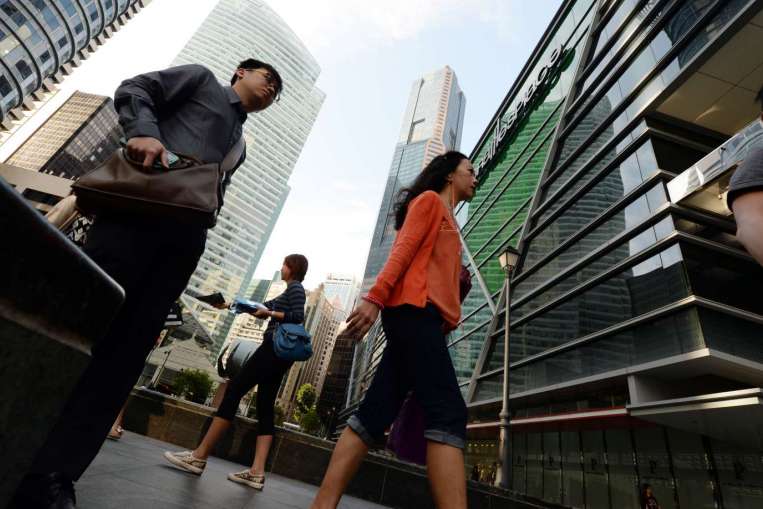
Singapore median income rate experienced rises in 2015
SINGAPORE - Incomes in Singapore grew strongly this year due to the tight labour market. Median income, including employer Central Provident Fund contributions, rose 4.7 per cent for full-time employed residents to $3,949 in 2015, from $3,770 last year.
Continued labour market tightness and manpower shortages in some industries pushed up pay, said the Manpower Ministry in its latest Singapore Workforce report released yesterday.
After accounting for negative inflation - the consumer price index is projected to fall by around 0.5 per cent this year - the average Singaporean or permanent resident worker earned 5.4 per cent more than last year. Last year had seen muted median salary growth of just 0.7 per cent in real terms.
Experts said the pickup in wage growth was likely driven by competition for workers. "Some workers have been able to get quite good increases despite gloomy economic growth," said SIM University economist Randolph Tan.
Mr Victor Tay, business representative of the Reach supervisory committee and Singapore Business Federation chief operating officer, said: "The National Wages Council has been recommending increases in wages, and it's a tight labour market so everyone is competing to raise salaries to retain staff."
But Associate Professor Tan cautioned that wage growth which outpaces real output growth would not be sustainable. "If it grows too fast, it suggests that at some point in the near future it might come to a screeching halt."
Despite ongoing initiatives to boost their incomes, workers in the bottom 20 per cent income bracket saw their pay go up at a slower pace than that of the average worker over the past five years.
Incomes at the 20th percentile rose by an average of 2.1 per cent a year from 2010 to 2015, while those at the median rose 3.1 per cent a year, after accounting for inflation.
National Trades Union Congress assistant secretary-general Zainal Sapari said more needs to be done for low-wage workers, such as making the 13th-month annual wage supplement mandatory.
Unemployment remained low over the year, and more Singapore residents, especially women and older workers, entered the labour force. The resident labour force participation rate rose for the fourth year in a row to 68.3 per cent for 2015, from 67 per cent last year.
But with rising wage costs, businesses are feeling the pinch. "We're seeing quite a lot of companies freezing headcount or slowing down recruitment, especially with the foreign worker quotas restricted as well," said Mr Tay.
This could keep a lid on wage growth, said Credit Suisse economist Michael Wan. "The story for 2016 is tepid demand for labour because of restructuring, weak macro- economic conditions and China's slowing growth," he said.
Please confirm If you want to unregister
You have been unregistered from gradlink







